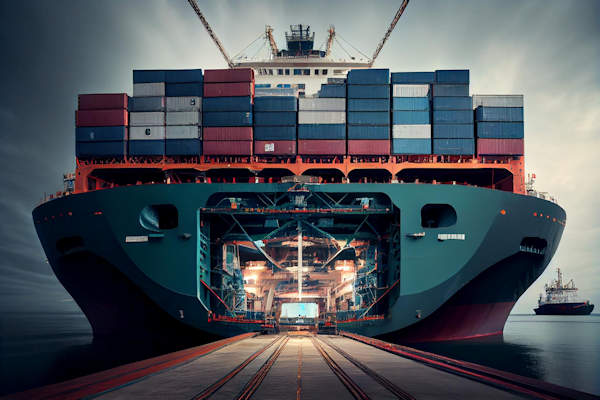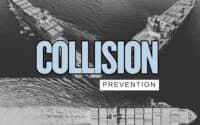Insider’s Guide to Navigating Maritime Insurance in a Rapidly Changing World

Maritime insurance, often termed “marine insurance,” has deep historical roots. Originating in ancient times, its modern iteration was significantly influenced by the establishment of Lloyd’s Coffee House in London during the late 17th century, a venue frequented by merchants, shipowners, and others with vested interests in maritime trade. As shipping expanded its reach, the need for a system to mitigate the financial risks of voyages became evident. This gave rise to formal marine insurance policies, paving the way for the sophisticated coverage options we recognize today.
* Please send feedback/suggestions to editor @ shipuniverse.com
The Indispensable Role of Insurance in Shipping
Shipping, despite its essential role in global trade, is not without its inherent risks. From the high-value assets such as the vessels themselves to the invaluable human lives aboard and the often precious cargo they transport, there’s much at stake. Insurance, in this context, isn’t merely a business consideration; it’s a safeguard against potentially crippling financial losses.
Vessels may face damage or total loss, cargo might be lost to theft or damage, and crews can suffer injuries or fatalities. In such scenarios, the absence of insurance could mean irreparable financial damages to the involved parties, possibly leading to bankruptcy or severe reputational harm. Hence, insurance serves as a financial cushion, ensuring that businesses can recover and continue operations even in the face of adversity.
Maritime Operations and Their Unpredictable Challenges
Maritime operations face a unique set of challenges, many of which are inherently unpredictable:
- Weather Challenges: Seas and oceans are notorious for their unpredictable weather conditions. Storms can arise suddenly, with waves reaching formidable heights, potentially damaging vessels and their cargo. Icebergs, especially in certain routes, pose another threat, capable of causing catastrophic damage.
- Piracy Threats: Modern piracy is a genuine concern in specific sea routes. Pirates, seeking ransom or loot, can hijack vessels, posing threats to the crew’s safety and the ship’s cargo. Ensuring protection against such threats requires both preventive measures and insurance coverage to manage potential aftermaths.
- Mechanical Failures: Ships are intricate machines, and even with the best maintenance, they can face mechanical failures. Engine breakdowns, steering issues, or malfunctions in crucial systems can leave a ship stranded or even lead to accidents.
Hull and Machinery (H&M): Shielding the Vessel
At the heart of maritime insurance is the Hull and Machinery (H&M) coverage. Designed to protect the shipowner’s primary asset—the vessel—this insurance offers coverage for physical damages to the ship itself. Whether it’s due to collision, grounding, fire, or machinery breakdown, H&M ensures that repair or replacement costs are met, maintaining the ship’s operational status. While comprehensive, it’s worth noting that this insurance does not typically cover losses from cargo damage or crew injuries—those require separate policies.
Protection and Indemnity (P&I): A Broad Liability Umbrella
P&I insurance is crucial for shipowners to navigate the vast sea of potential liabilities they face. This coverage extends to:
- Personal Injuries: Covering crew, passengers, or any third parties that might get injured aboard or due to the ship’s operations.
- Environmental Damage: Accidental oil spills or the release of other hazardous materials can result in significant environmental harm. P&I covers the resulting claims and cleanup costs.
- Other Third-party Risks: From damage to other vessels, piers, or infrastructure to other liabilities not explicitly covered under H&M, P&I offers a comprehensive safety net.
Cargo Insurance: Safeguarding Goods in Transit
While ships are valuable, so too are the goods they transport. Cargo insurance ensures that the value of goods—be it raw materials, finished products, or personal belongings—are covered against potential losses. Coverage typically includes damages from weather events, theft, mishandling, or other transit-related incidents. For businesses relying on shipped goods, this insurance is crucial for financial stability.
War Risk and Kidnap & Ransom (K&R): Specialized Safeguards
In today’s complex geopolitical landscape, ships sometimes navigate through politically unstable or piracy-prone waters. The War Risk policy provides coverage against losses resulting from war-like situations, including strikes, riots, or civil commotions. On the other hand, Kidnap & Ransom (K&R) insurance is designed to address the financial implications of piracy or hijacking incidents, ensuring that ransom, negotiation, and other related costs are taken care of.
Freight, Demurrage & Defence (FD&D): Legal Support on the Seas
While the shipping industry thrives on contracts and agreements, disputes are inevitable. FD&D insurance doesn’t cover liabilities or damages, but it does assist shipowners in covering the legal costs associated with charter party disputes, contractual disagreements, or any other maritime-related legal challenges. It’s a form of legal defense cover, ensuring that shipowners have the means to uphold their rights in contentious situations.
Weighing the Benefits and Limitations
Like any insurance, maritime policies come with their specific benefits and limitations:
- Benefits: From financial protection against vast potential losses to ensuring operational continuity and upholding reputations, the advantages of maritime insurance are undeniable. It not only offers peace of mind but also acts as a prerequisite for many operations, given its importance in global trade agreements and regulations.
- Limitations: Insurance policies come with exclusions, and maritime insurance is no different. Depending on the policy, certain events or damages might not be covered. Premium costs can also be substantial, especially for comprehensive coverages. It’s also crucial to keep in mind that over-reliance on insurance without implementing proper safety and operational standards can be detrimental in the long run.
Tailoring Insurance to Specific Operations: The Custom-fit Approach
In the intricate world of maritime operations, a one-size-fits-all approach to insurance doesn’t suffice. Every ship, route, cargo type, and crew presents its unique set of challenges and risks. Thus, it’s of paramount importance to tailor insurance policies to the specific needs of individual shipping operations.
For instance, a ship navigating polar waters will face different risks than one operating in tropical climates. Similarly, a vessel transporting hazardous materials needs a different coverage compared to one carrying textiles. By ensuring insurance policies align closely with the specific nature and requirements of operations, shipowners can minimize coverage gaps and ensure optimal protection.
Balancing Act: Premium Costs vs. Potential Risks
While the allure of lower premium costs can be tempting, it’s essential to weigh these savings against potential risks. Opting for lower premiums might mean higher deductibles or reduced coverage, potentially exposing shipowners to significant financial vulnerabilities.
On the other hand, over-insuring might lead to unnecessarily high premium costs without providing additional tangible benefits. It’s a delicate balance to strike, requiring a thorough risk assessment. The key is to understand the vulnerabilities of a particular shipping operation and then choose a policy that offers optimal coverage at a cost-effective premium.
Staying Afloat Amidst Changing Maritime Laws and Regulations
Maritime laws and regulations aren’t static. They evolve in response to changing global dynamics, environmental concerns, technological advancements, and other factors. It’s crucial for shipowners to stay updated on these shifts, as they can have direct implications on insurance policies.
For instance, regulations aimed at reducing environmental impact might necessitate changes in ship operations, which in turn could influence insurance requirements. Similarly, changes in international trade agreements or territorial disputes might introduce new risks for ships navigating certain routes, prompting a reevaluation of existing coverage. Regular reviews and updates of insurance policies in light of current maritime regulations ensure that coverages remain relevant and comprehensive.
The Horizon of Maritime Insurance: Anticipating Future Shifts
The world of maritime operations is on the cusp of transformative changes, driven by technology, environmental concerns, and shifting geopolitical landscapes. These changes will undeniably influence the maritime insurance landscape. Here’s a glimpse into the anticipated shifts:
- Emerging Risks: With the rise of autonomous ships, cyber risks will come to the forefront. Ensuring protection against cyber-attacks or technological malfunctions will become increasingly vital.
- Evolving Policies: Insurance providers will adapt to new realities, offering policies tailored to the challenges and needs of next-generation shipping. This might include specialized coverage for electric vessels, ships with AI-driven operations, or vessels designed for unconventional routes opened up by climate change.
For shipowners, the future holds both challenges and opportunities. Staying informed, adaptable, and proactive in updating insurance policies will be crucial to navigate the evolving waters of maritime insurance successfully.

Do you have a Maritime Product or Service that may be of interest to Shipowners? Tell us about it here!
Do you have feedback or insights? Please reach out to editor @ shipuniverse.com



